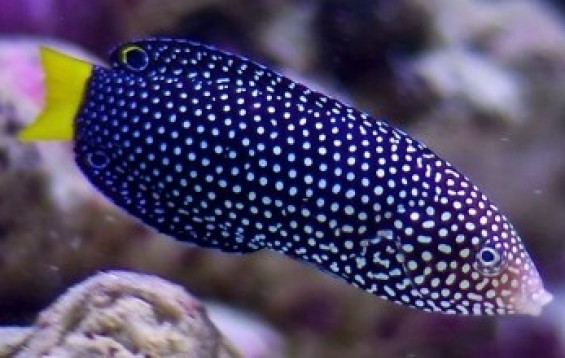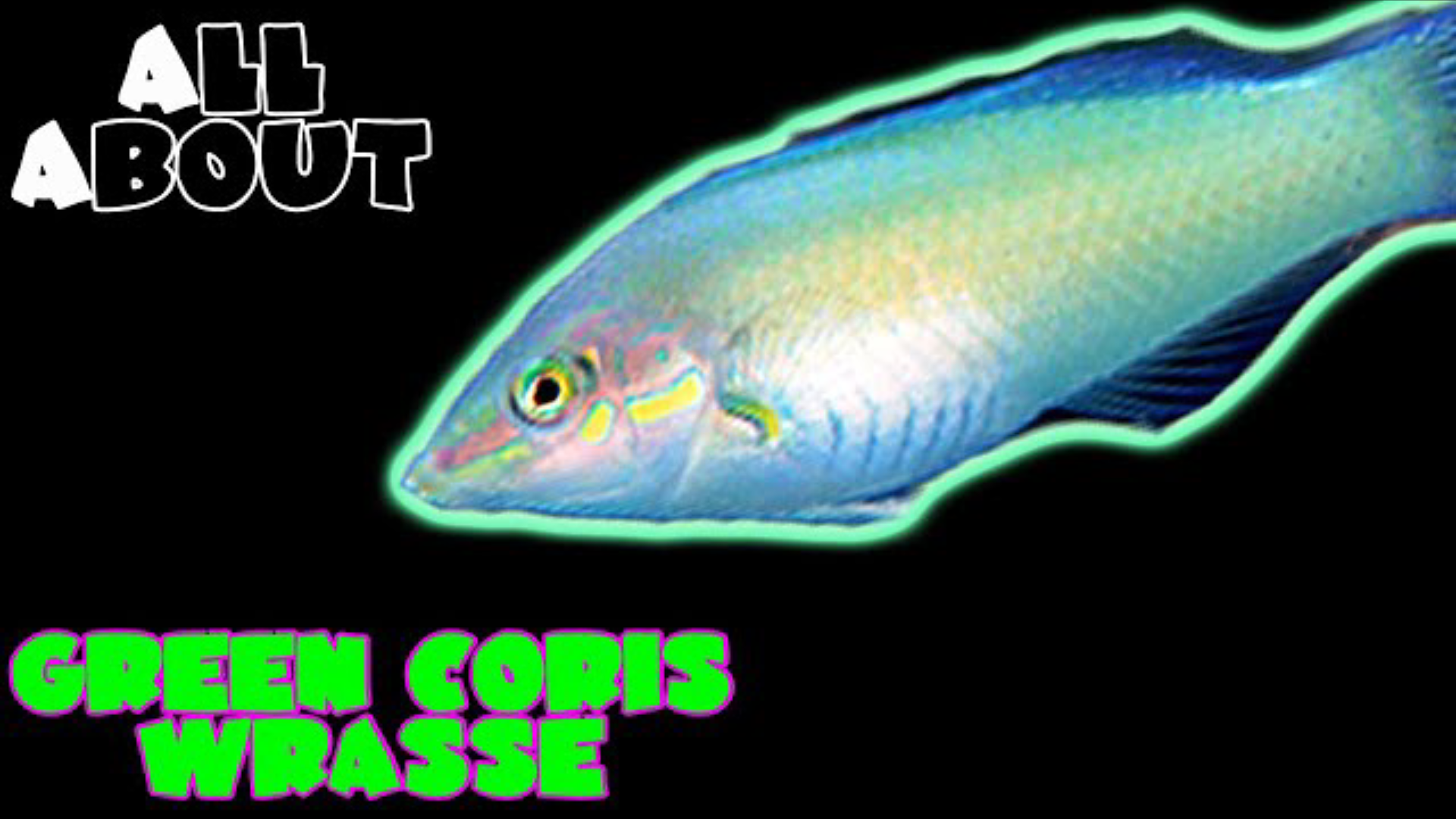- Name:
Yellowtail Wrasse
(View AKA's) - Family: Wrasse
- Species: Wrasse
- Scientific Name: Anampses meleagrides


General info about Yellowtail Wrasse
This fish species is found widely distributed in tropical waters. Primarily it is found in the Pacific waters and those of the Indian ocean. It is not considered an endangered species as there have been no signs in the past to show that the species numbers have been on the decline. It is native to countries located on both the eastern and western side of the Indian ocean boundaries and the east, central, northwest and western side of the Pacific ocean boundaries.
It occupies a range of between 3 and 60 meters deep and is considered a demersal species due to its affinity for lower depths. It has a wide range of habitats as it may be found occuping both soft coral and hard coral areas. it can also be found inhabiting sea facing coral reefs, as well as areas where there is an accumulation of sand or limestone.
While it may be used as a delicacy in some cultures, it is a popular marine trade item in the Philipines and Indonesia. This particular wrasse species is capable of achieving a maximum length of 9 inches.
Yellowtail Wrasse Diet & Nutrition
The Yellowtail Wrasse is a carnivorous species known to feed on macro-invertebrates, such as pyramide snalis, sea urchins, flat worms, found on the ocean floors or at the bottom of sedimented habitats. Zooplanktons are also an important part of the wrasse's diet. When in captivity, its diet should consist of marine meat that is finely chopped, and live mysids and brine.
Determining Sex of Yellowtail Wrasse
The yellowtail wrasse are known to be diandric species. However, this feature is only applicable to the females. Males are divided into two groups. Primary males are those that have been male all through their lives while secondary males are females that change dsex and became males. In a population that has few males, the females will easily change sex to fill the gap.
Breeding & Spawning Yellowtail Wrasse
The yellowtail is an oviparous species. They are known to either breed in pair or in a group of atleast one male and about six females. they have been observed, like other wrasse species, to spawn on reef outcrops, behaviour that is thought to encourage dispersal.
Common Diseases with Yellowtail Wrasse
There are no known diseases that threaten the Yellowtail wrasse.
Yellowtail Wrasse Origin
It is originally found in tropical waters, particularly Indian Ocean and Pacific ocean waters. It is widely distributed in the Great reef, east, central and west pacific, east and west indian ocean, Indonesia, The Red Sea, and Australia.
Caution with Yellowtail Wrasse
Wrasse are considered jumpers make sure your aquarium has a tight-fitting canopy or screen cover to prevent the Wrasse from jumping out of your aquarium. Wrasse have been known to jump through the smallest of holes in a canopy.
Wrasses prefer to have a 2" (5cm) sandbed to allow them to burrow into the sand to sleep or when they feel like they are in danger. Some people with bare bottom tanks have also added a Tupperware with a 2" deep sand bed to accommodate the wrasse's needs.
They are generally peaceful but may display aggression towards members of the same species.
Acclimating Yellowtail Wrasse
This particular species is rather difficult to maintain outside of its natural environment. It, however, requires an aquarium that is no less tha 60 gallons. There should also be an ample supply of rocks or corals in the aquarium meant to house it. These are important as they foster the growth of macro-invertebrates that the wrasse feed on. It also requires a minimum of 2 inches of sand. This acts as a hiding cover, whenever the fish feels threatenedfor one reason or the other, as well as resting cover.
If kept together with other species, then avoid placing them in the same aquarium with species smaller than them. While this is an altogether calm species, it is known to get aggressive when in contact with species smaller in size. Particularly, keep Sea Horses, Batfish, Psuedochromis, and Pipefish. You can pair it with Lionfish,Angelfish, Hawkfish ,Hogfish, and Frogfish. However, caution must be taken when doing so.
When first introduced into the aquarium, it will require a high feeding frequency until its natural foods can start growing within the aquarium. For higher survival chances, it is best to introduce it in its juvinile stage.
Original Detail
| Name | Species | Family | Scientific Name | More Detail | Added by |
|---|---|---|---|---|---|
| Yellowtail Wrasse | Wrasse | Wrasse | Anampses meleagrides | This fish species is found widely distributed in tropical waters. Primarily it is found in the Pacific waters and those of the Indian ocean. It is not considered an endangered species as there have been no signs in the past to show that the species numbers have been on the decline. It is native to countries located on both the eastern and western side of the Indian ocean boundaries and the east, central, northwest and western side of the Pacific ocean boundaries. It occupies a range of between 3 and 60 meters deep and is considered a demersal species due to its affinity for lower depths. It has a wide range of habitats as it may be found occuping both soft coral and hard coral areas. it can also be found inhabiting sea facing coral reefs, as well as areas where there is an accumulation of sand or limestone. While it may be used as a delicacy in some cultures, it is a popular marine trade item in the Philipines and Indonesia. This particular wrasse species is capable of achieving a maximum length of 9 inches. |
PalaciosAn |
Changed by users
| Submitted Date | Submitted By | Status | Action |
|---|


